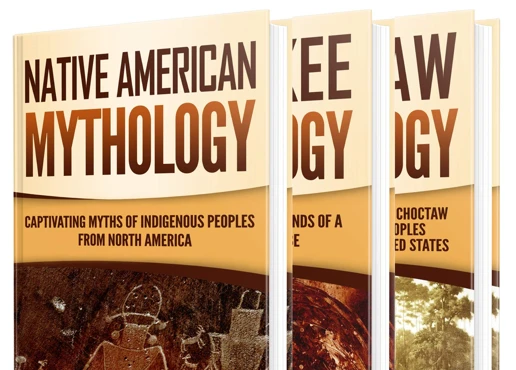Native American Heroic Legends and Folklore are a vibrant tapestry of captivating stories passed down through generations. These tales are rich in cultural significance and explore the origins of Native American people, their connection to the natural world, and the remarkable feats of heroes and heroines. From creation myths to tales of bravery, the Native American legends offer a glimpse into their deeply-rooted traditions and spiritual beliefs. This article delves into the origins of these legends, the various types of heroic tales, and their lasting impact on society today. So, let’s embark on a fascinating journey into the enchanting realm of Native American folklore.
Contents
- The Origin of Native American Legends
- Types of Native American Heroic Legends
- Significant Native American Heroic Legends
- Common Themes in Native American Legends
- Impact of Native American Legends Today
- Conclusion
-
Frequently Asked Questions
- 1. How were Native American legends passed down through generations?
- 2. Were Native American legends based on real events?
- 3. What role did nature play in Native American legends?
- 4. Were there different versions of the same Native American legend?
- 5. Did Native American legends have moral lessons?
- 6. Did Native American legends have a spiritual significance?
- 7. Were animals portrayed as important characters in Native American legends?
- 8. Are Native American legends still shared and celebrated today?
- 9. How have Native American legends influenced contemporary literature and art?
- 10. What can we learn from Native American legends?
- References
-
Frequently Asked Questions
- 1. How were Native American heroic legends passed down through generations?
- 2. Are Native American heroic legends based on real events or purely fictional?
- 3. Why are animals frequently featured in Native American heroic legends?
- 4. What are some common themes in Native American heroic legends?
- 5. How did Native American heroic legends influence other forms of art and literature?
- 6. Were Native American heroic legends only found in certain tribes?
- 7. How do Native American heroic legends contribute to the understanding of Native American history?
- 8. Are Native American heroic legends still relevant in modern society?
- 9. Do all Native American tribes have their own creation myths?
- 10. Can non-Native Americans appreciate and learn from Native American heroic legends?
- References
- Read More
The Origin of Native American Legends
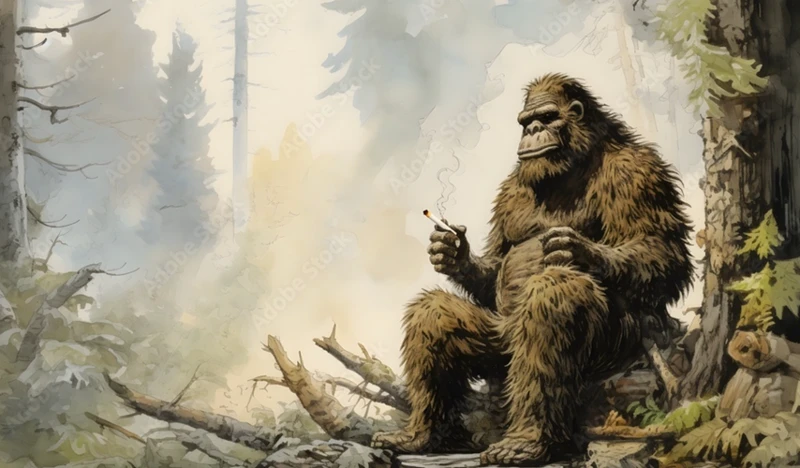
The Native American legends have their roots deeply embedded in the rich history and cultural traditions of Indigenous peoples. These captivating stories were passed down orally from generation to generation, serving as a means of preserving their ancestral heritage. The origin of Native American legends can be traced back thousands of years, originating from different tribes and communities across the Americas. Each tribe had its own unique set of myths, folklore, and hero tales that were shaped by their geographic location, environment, and spiritual beliefs.
The storytelling tradition played a vital role in Native American societies. Elders and revered members of the community would gather around campfires or in ceremonial gatherings to share these tales of wisdom and inspiration. The stories served multiple purposes, including conveying important moral lessons, explaining natural phenomena, and preserving tribal history. Through these narratives, Native American communities maintained a strong connection to their cultural identity and passed down valuable knowledge to younger generations.
Native American legends often incorporated elements of nature, animals, and spiritual beings, reflecting the deep reverence and respect that Indigenous peoples held for the natural world. These stories often celebrated the harmonious relationship between humans and nature, emphasizing the interconnectedness of all living things. They also explored themes of bravery, courage, and the triumph of good over evil.
The oral tradition of storytelling allowed for flexibility and adaptation, ensuring that the legends remained relevant and meaningful to each generation. As such, variations of the same story could be found across different tribes, with each community adding its own unique nuances and perspectives.
Today, the origin of Native American legends continues to fascinate scholars, anthropologists, and individuals interested in understanding the diverse cultures and histories of Indigenous peoples. By unraveling these deep-rooted narratives, we gain a deeper appreciation for the wisdom, resilience, and spiritual beliefs of Native American communities throughout history.
Types of Native American Heroic Legends
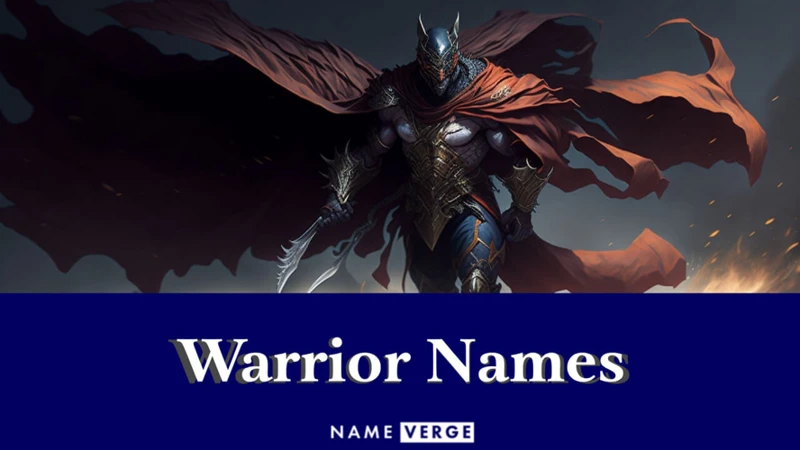
Native American Heroic Legends come in various forms, each with its own distinct characteristics and storytelling styles. These legends can be classified into different types based on their themes and narrative structures.
1. Creation Myths: These legends delve into the origins of the world and the creation of humanity. They often involve powerful deities or supernatural beings shaping the land, animals, and humans. Creation myths serve to explain natural phenomena and the cultural significance of the elements in Native American societies.
2. Hero Tales: Heroic legends center around individuals who exhibit extraordinary courage, strength, and wisdom. These tales highlight the triumph of heroes and heroines over adversity and often emphasize the values of bravery, honor, and self-sacrifice. These legendary figures inspire and teach important moral lessons within their respective tribes.
3. Animal Legends: Animal legends, also known as trickster tales, feature anthropomorphic animal characters who possess both human and animal qualities. These stories showcase the cunning and cleverness of these animal figures, often serving as cautionary tales or teaching lessons about proper behavior and morals. The trickster character is known for its mischievous nature, often using wit and tricks to navigate through various challenges.
These different types of Native American Heroic Legends provide a glimpse into the diverse cultural heritage and immense creativity of Indigenous peoples. Through oral traditions and artistic expressions, these legends continue to captivate and educate people today, showcasing the depth of Native American storytelling traditions.
1. Creation Myths
Creation myths hold a significant place within Native American legends. These myths explore the origins of the world and humanity, providing insight into the beliefs and spiritual values of Indigenous cultures. Each tribe has its own unique creation story, but they often share common themes. To highlight some key elements of creation myths in Native American folklore, we can use a list:
1. Emergence Stories: Some tribes, like the Hopi and Navajo, have creation myths that narrate the emergence of their people and the world from underground or underwater realms. These stories often emphasize the connection between the land and the people, highlighting the sacredness of the Earth.
2. Animal Creators: Many Native American creation myths feature animals as central figures in the story. These animals possess extraordinary powers and are responsible for shaping the world, such as forming mountains, rivers, and landscapes. The Coyote and Raven are common characters that appear in creation stories across different tribes.
3. Spiritual Entities: Native American creation myths frequently involve spiritual entities and supernatural beings. These entities, often depicted as gods or spirits, play a vital role in bringing order to the world and establishing the natural balance. The Great Spirit, also known as the Creator or the Great Mystery, is a prominent figure in many creation myths.
4. Symbolic Themes: Creation myths are replete with symbolism, representing profound concepts and teachings. They may explore themes of duality, balance, and the cyclical nature of life. Symbolic representations of natural elements like sun, moon, water, and fire convey deeper meanings in these stories.
5. Connection to Ancestors: Native American creation myths often emphasize the continuity between past, present, and future generations. They highlight the role of ancestors in shaping the world and passing down cultural traditions. These myths foster a sense of belonging and reinforce the importance of ancestral wisdom.
Understanding the creation myths of Native American legends allows us to appreciate the diverse perspectives and spiritual beliefs of Indigenous cultures. These stories provide insight into their cosmology, values, and profound connection to the natural world. By exploring these myths, we gain a deeper understanding of the origins and cultural identity of Native American communities throughout history.
2. Hero Tales
Hero tales are a prominent genre within Native American legends, depicting the extraordinary feats and adventures of legendary figures who possess exceptional abilities or qualities. These tales often showcase individuals who demonstrate bravery, wisdom, and resourcefulness in the face of adversity. Hero tales not only entertain and inspire listeners but also convey important moral and cultural values within Native American communities.
In Native American hero tales, the protagonists are often portrayed as figures with supernatural powers or as individuals who receive special gifts or guidance from spirits or animals. These heroes are revered for their courage, leadership, and ability to protect and provide for their tribes. Their stories serve as examples of admirable qualities and virtues that community members should strive to embody.
A common theme in Native American hero tales is the journey or quest undertaken by the protagonist. This journey represents not only a physical adventure but also a spiritual and personal transformation. The hero encounters various trials, tests, and adversaries along the way, often symbolic of the challenges and obstacles faced in life. Through these trials, the hero learns important lessons, hones their skills, and discovers their true potential.
Many hero tales also incorporate the concept of the “trickster” character. The trickster is a mischievous and cunning figure who often disrupts the natural order or challenges societal norms. They use their wit and cleverness to outsmart their opponents and bring about positive change or teach valuable lessons. These trickster characters add an element of humor and unpredictability to the hero tales, providing both entertainment and insight.
One well-known example of a Native American hero tale is the story of “Glooskap” from the Wabanaki tribes of northeastern North America. Glooskap is a legendary figure who possesses extraordinary powers and wisdom. Through his adventures and encounters with various mythical creatures and adversaries, Glooskap teaches important life lessons, fosters harmony between humans and nature, and establishes the natural order of the world.
The hero tales of Native American legends continue to captivate audiences and offer valuable insights into the cultural values, beliefs, and traditions of Indigenous peoples. By exploring these stories, we gain a deeper appreciation for the resilience, bravery, and wisdom of the heroes who have played a significant role in shaping Native American folklore and identity.
3. Animal Legends
3. Animal Legends
Native American folklore is replete with captivating animal legends that showcase the deep reverence and spiritual connection between Indigenous peoples and the natural world. These stories often anthropomorphize animals, assigning them human-like traits, and using them as allegorical figures to convey important moral lessons and cultural values.
Animals such as the wolf, bear, eagle, and coyote frequently feature in Native American animal legends, each symbolizing different virtues or qualities. For example, the wolf is often depicted as a symbol of strength, loyalty, and unity within a pack. Meanwhile, the eagle represents freedom, vision, and spiritual insight. These animal legends serve as metaphors and archetypes that provide guidance and inspiration for individuals and communities.
One well-known animal legend is that of Coyote, a prominent figure in the mythology of several Native American tribes, including the Navajo, Cheyenne, and Nez Perce. Coyote is often portrayed as a trickster figure, personifying both cunning and foolishness. His mischievous antics often result in humorous or cautionary tales that teach important life lessons, such as the consequences of greed or the importance of humility.
Other animal legends focus on the interconnectedness and kinship between humans and animals. These stories emphasize the mutual respect and harmony that should exist between humans and the natural world. They highlight the idea that humans are not superior to animals but rather equal participants in the web of life.
The animal legends of Native American cultures reflect their deep understanding of the natural world and the profound wisdom they derived from observing and living in harmony with nature. These stories continue to be cherished and shared by Native American communities to this day, reminding us of the importance of our relationship with the animal kingdom and the fundamental teachings embedded in their tales.
Note: To further explore Native American astrological beliefs and the connections between animals and spirituality, you can check out the article “Understanding Ophiuchus: Love Language and Zodiac Sign Compatibility”.
Significant Native American Heroic Legends
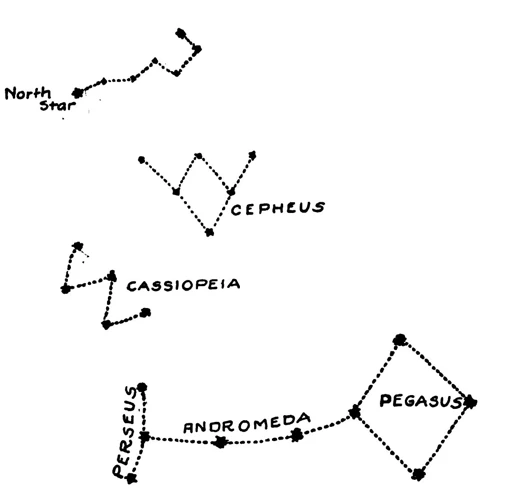
1. The Legend of Hiawatha: One of the significant Native American heroic legends is the tale of Hiawatha. This legendary figure is known for bringing together the five tribes of the Iroquois Confederacy – the Mohawk, Oneida, Onondaga, Cayuga, and Seneca – to form a united front against their enemies. Hiawatha’s story, often told through poetry and songs, highlights his leadership skills, wisdom, and ability to foster unity among diverse groups. His legend emphasizes the importance of collaboration, peace, and harmony within communities.
2. The Tale of Pocahontas: Pocahontas, a young Native American woman belonging to the Powhatan tribe, is another significant figure in Native American heroic legends. Her story revolves around her courage, compassion, and the lessons of understanding and acceptance between different cultures. Pocahontas famously intervened to save the life of Englishman John Smith, an act that showcased her bravery and desire for peace. Her legend symbolizes the bridge between Native American and European cultures, exploring themes of empathy, cultural exchange, and the complexities of colonialism.
3. The Story of Chief Crazy Horse: Chief Crazy Horse, a prominent leader of the Oglala Lakota tribe, is renowned for his role in resisting the encroachment of Native American lands and preserving Lakota traditions. His legend encompasses tales of great bravery, military prowess, and unwavering dedication to the Lakota way of life. Crazy Horse’s military strategies and leadership during battles against the United States government remain legendary. His story serves as a powerful symbol of Native American resistance against oppression and the preservation of cultural heritage.
These significant Native American heroic legends showcase the diversity and depth of indigenous cultures, providing insight into their values, traditions, and historical struggles. Through these stories, the legacies of Hiawatha, Pocahontas, and Chief Crazy Horse continue to inspire and educate individuals about the rich tapestry of Native American heritage.
1. The Legend of Hiawatha
The Legend of Hiawatha is an iconic Native American heroic tale that has captivated audiences for centuries. This legend originates from the Iroquois, also known as the Haudenosaunee, a confederacy of tribes located in the northeastern United States and southeastern Canada. Hiawatha, a legendary figure, is believed to have played a key role in the formation of the confederacy.
According to the legend, Hiawatha was a skilled orator and a noble leader who sought to bring peace and unity among the warring tribes of the region. With the help of a spiritual guide named the Great Peacemaker, Hiawatha traveled from village to village, spreading his message of harmony and cooperation. He advocated for the establishment of a governing council, which would later become known as the Iroquois Confederacy, or the League of Five Nations, consisting of the Mohawk, Oneida, Onondaga, Cayuga, and Seneca tribes.
The Legend of Hiawatha highlights the importance of diplomacy, cooperation, and the power of unity in the face of adversity. It demonstrates the profound wisdom and leadership abilities attributed to Hiawatha, whose efforts ultimately led to the formation of one of the most successful and influential Native American political alliances in history.
This legendary tale has inspired numerous adaptations and interpretations, including Henry Wadsworth Longfellow’s epic poem, “The Song of Hiawatha,” which introduced the story to a wider audience. The enduring legacy of the Legend of Hiawatha serves as a testament to the cultural significance and enduring power of Native American heroic legends in shaping narratives and inspiring audiences to this day.
2. The Tale of Pocahontas
The Tale of Pocahontas is one of the most well-known Native American legends, immortalized in literature, film, and popular culture. Pocahontas, whose real name was Matoaka, was a young Native American woman belonging to the Powhatan tribe. Her story is a powerful testament to courage, resilience, and the ability to bridge cultural divides.
Pocahontas’ tale is set against the backdrop of early English colonization in Virginia in the 17th century. According to the legend, Pocahontas saved the life of Englishman John Smith, who was captured by her tribe. Moved by Smith’s plight, Pocahontas intervened and persuaded her father, Chief Powhatan, to spare his life. This act of compassion and bravery cemented her role as a key figure in the early encounters between the Native Americans and the English settlers.
The legend of Pocahontas became even more prominent when she married Englishman John Rolfe, symbolizing an early intercultural union between the Native Americans and the English colonizers. Their marriage was seen as a symbol of peace and cooperation between the two cultures. Pocahontas and John Rolfe traveled to England, where she was introduced to the English aristocracy and gained significant attention. However, her time in England was short-lived, as she fell ill and passed away at a young age.
Pocahontas’ story has been celebrated for centuries as a tale of bravery and reconciliation. It highlights the complexities of early Native American-European relations and the role of extraordinary individuals who sought understanding and harmony amidst cultural differences. Her legend continues to inspire and captivate audiences, shedding light on the enduring legacy of Native American cultures and their interactions with the outside world.
To learn more about the legendary figures and their impact, you can explore the fascinating world of astrology and how it influences relationships. Understanding the dynamics of relationships can provide valuable insights into the connections forged between diverse cultures and individuals.
3. The Story of Chief Crazy Horse
The Story of Chief Crazy Horse is a renowned Native American legend that tells the tale of a courageous and visionary leader of the Oglala Lakota tribe. Crazy Horse, also known as Tȟašúŋke Witkó, was born around 1840 in present-day South Dakota. He played a pivotal role in defending the ancestral lands and way of life of his people against encroachment by European settlers.
Crazy Horse’s story is filled with acts of valor and strategic brilliance. He was known for his exceptional skills as a warrior and his unwavering commitment to his people’s sovereignty. One of the most notable incidents from his life is the Battle of the Little Bighorn in 1876, where he led the Lakota and other tribes in a decisive victory against General George Custer and the U.S. Army. This battle, often referred to as “Custer’s Last Stand,” became an iconic symbol of Native American resistance.
Crazy Horse’s leadership and bravery made him a revered figure among his people, and his legend continued to grow even after his untimely death in 1877. His extraordinary vision, spiritual connection, and profound understanding of the land made him an inspirational figure for generations to come.
Today, Crazy Horse’s legacy lives on through the Crazy Horse Memorial, a massive monument being carved into the Black Hills of South Dakota. This monument, when completed, will depict the heroic figure of Crazy Horse mounted on a horse, symbolizing his indomitable spirit and devotion to his people. The Crazy Horse Memorial stands as a testament to the enduring strength and resilience of Native American culture and serves as a reminder of the ongoing struggles faced by Indigenous communities.
The story of Chief Crazy Horse serves as a testament to the resilience, courage, and leadership of Native American figures throughout history. It not only highlights the heroism of a remarkable individual but also sheds light on the broader narrative of Indigenous resistance and the fight to preserve ancestral lands and cultural traditions. Understanding and sharing these heroic legends is crucial in appreciating the rich heritage and contributions of Native American peoples.
Common Themes in Native American Legends
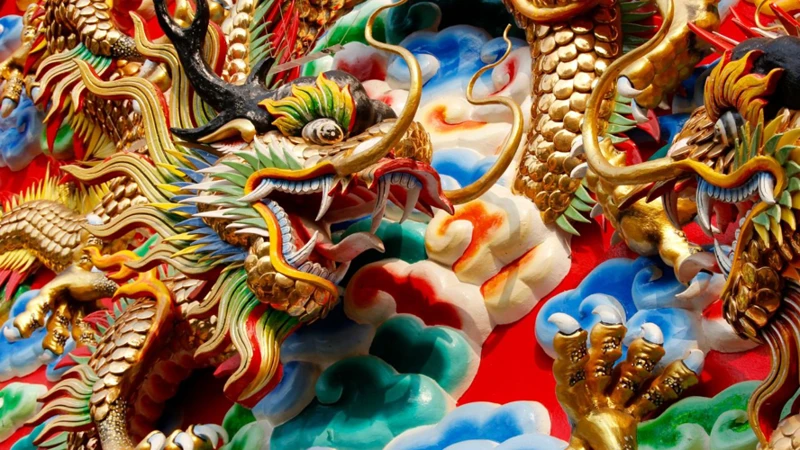
Native American legends encompass a wide array of captivating stories that share common themes and motifs across different tribes and communities. These themes provide insight into the cultural values and beliefs held by Indigenous peoples. Respect for nature and animals is a prominent theme found in many Native American legends. These tales emphasize the interconnectedness between humans and the natural world, highlighting the importance of living in harmony with the environment. The legends often depict animals as both teachers and spiritual guides, symbolizing wisdom, strength, and resilience. Another prevalent theme is the emphasis on bravery and warriors. Native American legends frequently celebrate acts of courage and valor, highlighting the significance of individuals who exhibit bravery in protecting their communities and upholding their values. Additionally, a connection to the spirit world is a recurring aspect in Native American legends. These stories explore the spiritual beliefs and practices of Indigenous peoples, showcasing their deep connection to the unseen realms and their understanding of the interconnected nature of the physical and spiritual realms. By delving into these common themes, we gain a deeper appreciation for the cultural heritage and worldview of Native American communities.
1. Respect for Nature and Animals
Respect for nature and animals is a prominent theme that runs through Native American legends. Indigenous peoples held a deep reverence for the natural world, viewing it as a sacred and interconnected system. This respect extended to all living beings, including animals, plants, and the elements. Native American legends often portrayed animals as powerful spiritual entities, teachers, or guides. They were seen as equals, deserving of honor and admiration.
In these legends, animals were endowed with unique qualities and characteristics, embodying different virtues and lessons. For example, the wolf symbolized loyalty and the importance of community, while the eagle represented wisdom, vision, and freedom. The bear was seen as a powerful protector, and the turtle was associated with longevity and patience. By incorporating these animal figures into their stories, Native American cultures sought to convey the wisdom and teachings they believed animals possessed.
The respect for nature and animals in Native American legends also emphasized the interconnectedness of all living things. Nature was not merely a resource to be exploited but a vital part of their existence. These stories often highlighted the delicate balance between humans and the natural world, stressing the importance of living in harmony with the environment. They served as a reminder to treat nature with reverence and to be mindful of the impact of human actions on the Earth.
This respect for nature and animals in Native American legends is a timeless lesson that resonates even today. As we navigate an increasingly interconnected and fragile world, these stories remind us of the importance of preserving and protecting our environment. They inspire us to develop a deeper appreciation for the wonders of nature and to cultivate a sense of stewardship for future generations.
To learn more about the role of astrology in understanding relationships and personal growth, you can explore /astrology-understand-relationships/. Understanding astrology can provide insights into our connections with the natural world and how celestial influences shape our lives in mystical and meaningful ways.
2. Emphasis on Bravery and Warriors
The Native American legends exhibit a remarkable emphasis on bravery and warriors. These stories often revolve around courageous individuals who faced daunting challenges and adversity with unwavering courage and determination. Warriors were highly regarded and revered among Native American tribes, embodying the ideals of strength, honor, and protection.
In many Native American legends, the acts of bravery and feats of warriors were celebrated as they defended their people from external threats, safeguarded their lands, and fought for justice. These tales often portrayed the warriors as symbols of resilience and heroism, demonstrating their unwavering commitment to their tribes and the preservation of their way of life.
One such legendary figure is Crazy Horse, a revered Lakota Sioux warrior who played a pivotal role in defending the Native American lands against the encroachment of European settlers. Known for his exceptional bravery and tactical skills, Crazy Horse fought valiantly in numerous battles, including the famous Battle of Little Bighorn. His legendary status among Native American communities highlights the deep-rooted admiration for warriors and their acts of valor.
Warrior tales also conveyed the importance of personal sacrifice and selflessness. Native American warriors were expected to prioritize the well-being of their tribes over their own individual desires. This selflessness was reflected in their heroic actions and their willingness to lay down their lives for the greater good of their people.
The emphasis on bravery and warriors in Native American legends served as a source of inspiration for future generations. These stories instilled a sense of pride, honor, and resilience among Native American youth, encouraging them to embody the qualities of bravery and stand up for their communities and traditions.
The legacy of bravery and warriorhood in Native American legends continues to resonate in modern times. Native American communities celebrate the spirit of their ancestral warriors through various cultural events, traditional ceremonies, and powwows, where stories of their heroic exploits are retold and honored.
By preserving and passing down these legends, Native American communities ensure that the virtues of bravery and warriors remain alive and inspire future generations to face challenges with courage, determination, and a deep-rooted sense of community.
3. Connection to the Spirit World
– Native American legends often depict a profound connection to the spirit world, a realm that exists beyond the physical realm of humans. In many tribes and cultures, shamans or spiritual leaders held the role of intermediaries between the human world and the spirit world. These individuals possessed special abilities or gifts that allowed them to communicate with spirits, ancestors, and other supernatural beings.
– The connection to the spirit world in Native American legends was essential for decision-making, healing, and seeking guidance. Shamans would often enter trance-like states through rituals, singing, dancing, or the use of hallucinogens to access the spiritual realm. They would seek counsel, wisdom, and protection from spirits, who were believed to hold vast knowledge and power.
– The spirit world in Native American legends was inhabited not only by benevolent spirits but also by malevolent ones. These spirits could bring illness, mischief, or chaos if not appeased or respected. Native American communities had rituals, ceremonies, and offerings devoted to maintaining a harmonious relationship with the spirit world and seeking their blessings.
– This connection to the spirit world also played a significant role in the belief systems and cosmologies of Native American tribes. Many legends revolved around creation stories, where powerful spirits or gods shaped the world and all living things. The spirit world was seen as a source of life, energy, and spiritual guidance.
– Today, the connection to the spirit world continues to hold importance in many Native American communities. Traditional ceremonies, rituals, and practices are still carried out, ensuring the ongoing bond and respect between the physical and spiritual realms. The belief in the spirit world not only brings solace and meaning to individuals but also serves as a reminder of the profound spiritual heritage of Native American cultures.
By exploring the Native American legends’ connection to the spirit world, we gain insight into the spiritual beliefs, practices, and values cherished by these ancient cultures. It is a testament to the enduring significance of the sacred bond between humans and the spiritual realms.
Impact of Native American Legends Today
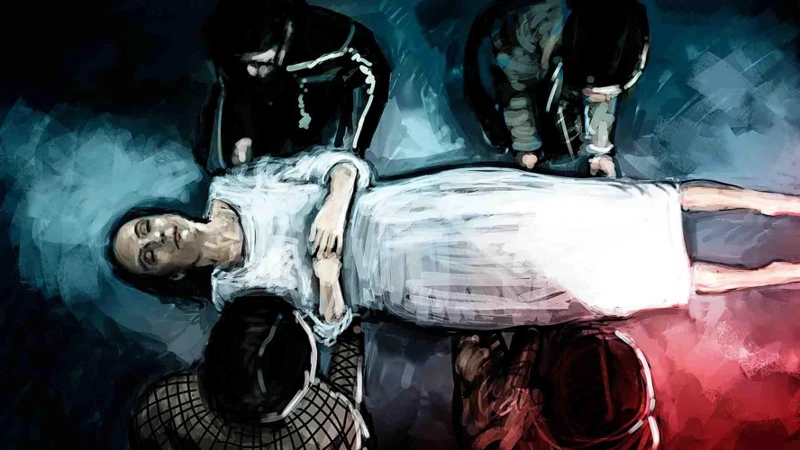
The impact of Native American legends extends far beyond their historical and cultural significance. Today, these ancient tales continue to resonate with people from all walks of life and play a vital role in promoting understanding, appreciation, and preservation of Indigenous cultures.
One significant impact of Native American legends is their role in education and raising awareness. Schools and educational institutions incorporate these stories into their curricula to teach students about the rich heritage of Indigenous peoples. By studying these legends, students gain a deeper understanding of Native American history, traditions, and spiritual beliefs. This helps break down stereotypes, fosters cultural appreciation, and encourages respect for diverse cultures.
Native American legends contribute to the preservation of Indigenous languages. Many of these stories have been passed down orally for centuries, and their retelling helps keep languages alive. Native American communities work tirelessly to maintain and revitalize their languages, and the prevalence of these stories serves as a powerful tool in language revitalization efforts.
Native American legends also have a profound impact on the arts and literature. Writers, poets, and artists draw inspiration from these stories, adapting them into contemporary works that capture the imagination of readers and viewers. By incorporating elements of Native American legends into their art, creators pay homage to the ancestral wisdom and spirituality of Indigenous peoples while also introducing these narratives to wider audiences.
Native American legends continue to shape environmental activism and conservation efforts. The deep respect for nature and the interconnectedness between humans and the natural world, as reflected in these stories, inspire individuals to become advocates for environmental sustainability. These legends emphasize the importance of stewardship and the need to protect the lands and resources we share.
The impact of Native American legends today is significant and multifaceted. They educate, promote cultural appreciation, inspire artistic expression, preserve languages, and influence environmental stewardship. By recognizing and acknowledging the enduring relevance of these stories, we honor the rich heritage of Indigenous peoples and ensure that their wisdom and traditions continue to be valued for generations to come.
Conclusion

In conclusion, Native American Heroic Legends and Folklore offer a profound insight into the ancestral heritage, cultural values, and spiritual beliefs of Indigenous peoples. These captivating and timeless stories have been passed down through generations, preserving the wisdom, traditions, and history of Native American communities. From creation myths that explain the origins of the world to hero tales that celebrate bravery and resilience, these legends serve as a testament to the deep connection that Indigenous peoples have with the natural world and the spirit realm. The impact of Native American legends extends far beyond their cultural significance. They provide valuable lessons about respect, harmony, and the importance of preserving the delicate balance between humans and nature. By delving into these enchanting narratives, we gain a greater appreciation for the rich tapestry of Native American cultures and the enduring legacy of their heroic legends. To learn more about the passions and personalities associated with astrology, check out our article on Unraveling the Deep Passions of Ophiuchus Individuals.
Frequently Asked Questions

1. How were Native American legends passed down through generations?
Native American legends were primarily passed down through the oral tradition. Elders and respected members of the community would share these stories through spoken word, ensuring their preservation and transmission to younger generations.
2. Were Native American legends based on real events?
While some Native American legends were inspired by historical events, many were symbolic and served to convey important cultural and spiritual teachings rather than being strictly based on factual occurrences.
3. What role did nature play in Native American legends?
Nature played a significant role in Native American legends. These stories often emphasized the interconnectedness of all living things and the profound respect that Indigenous peoples had for the natural world.
4. Were there different versions of the same Native American legend?
Yes, there were often different versions of the same Native American legend. Due to the oral tradition, storytelling allowed for flexibility and adaptation, resulting in variations of the stories across different tribes and communities.
5. Did Native American legends have moral lessons?
Yes, many Native American legends contained moral lessons. These stories conveyed values such as respect, humility, bravery, and the importance of living in harmony with nature and one another.
6. Did Native American legends have a spiritual significance?
Absolutely. Native American legends were deeply intertwined with spiritual beliefs and practices. They often explored the relationship between humans, nature, and the spirit world, offering insights into the Indigenous peoples’ spirituality and worldview.
7. Were animals portrayed as important characters in Native American legends?
Yes, animals played crucial roles in Native American legends. They were often personified and represented various virtues, strengths, or aspects of nature. Animals served as teachers, guides, and helpers in these stories.
Yes, Native American legends continue to be shared and celebrated today. They hold cultural, historical, and educational significance and are a source of pride and identity for Indigenous communities across the Americas.
9. How have Native American legends influenced contemporary literature and art?
Native American legends have had a profound impact on contemporary literature and art. Many writers, artists, and filmmakers draw inspiration from these timeless stories, incorporating their themes, characters, and teachings into their works.
10. What can we learn from Native American legends?
Native American legends offer valuable insights into Indigenous cultures, their relationship with nature, their spiritual beliefs, and their understanding of the world. They teach us about the importance of preserving our cultural heritage, respecting the environment, and living in harmony with one another.
References
- Native American Mythology
- Native American Mythology – myths and legends …
- Native American Myths, Legends & Folklore
Frequently Asked Questions

1. How were Native American heroic legends passed down through generations?
Native American heroic legends were primarily passed down through oral tradition. They were shared through storytelling, often by tribal elders or respected members of the community. This ensured that the legends were preserved and maintained their cultural significance.
2. Are Native American heroic legends based on real events or purely fictional?
Native American heroic legends can be a combination of both real events and fictional elements. While some legends may have originated from historical events or individuals, they often incorporate mythical and supernatural elements to convey spiritual and cultural beliefs.
3. Why are animals frequently featured in Native American heroic legends?
Animals hold a significant place in Native American culture, symbolizing various traits and qualities. In heroic legends, animals are often anthropomorphized and used to convey important moral lessons, spiritual guidance, and the close connection between humans and nature.
4. What are some common themes in Native American heroic legends?
Common themes in Native American heroic legends include respect for nature and animals, emphasis on bravery and warriors, and a deep connection to the spirit world. These themes reflect the values, beliefs, and traditions of Native American cultures.
5. How did Native American heroic legends influence other forms of art and literature?
Native American heroic legends have had a significant impact on various art forms and literature. They have inspired countless paintings, sculptures, poems, and novels, both by Native American artists and by others who have been captivated by the richness and depth of these legends.
6. Were Native American heroic legends only found in certain tribes?
No, Native American heroic legends are diverse and exist across numerous tribes and regions. Each tribe has its own unique legends and folklore, reflecting their distinct cultural heritage and beliefs. Some legends may be shared among multiple tribes, while others are specific to a particular tribe.
7. How do Native American heroic legends contribute to the understanding of Native American history?
Native American heroic legends provide valuable insights into Native American history, as they often contain elements of historical events, cultural practices, and societal norms. They help us comprehend the traditions, struggles, and triumphs of Native American communities throughout history.
8. Are Native American heroic legends still relevant in modern society?
Absolutely, Native American heroic legends continue to hold relevance in modern society. They offer valuable lessons about respecting nature, promoting bravery, and appreciating the spiritual world. These legends also contribute to the preservation and celebration of Native American culture and heritage.
9. Do all Native American tribes have their own creation myths?
Yes, creation myths are prevalent in many Native American tribes. These myths explain the origins of the world, humanity, and the relationships between humans, nature, and the spirit world. However, the specific details and interpretations may vary among different tribes.
10. Can non-Native Americans appreciate and learn from Native American heroic legends?
Absolutely, Native American heroic legends are not exclusively meant for Native Americans. They hold universal themes and messages that can be appreciated and learned from by people from all backgrounds. These legends offer a nuanced understanding of the human condition and our connection to the natural world.

